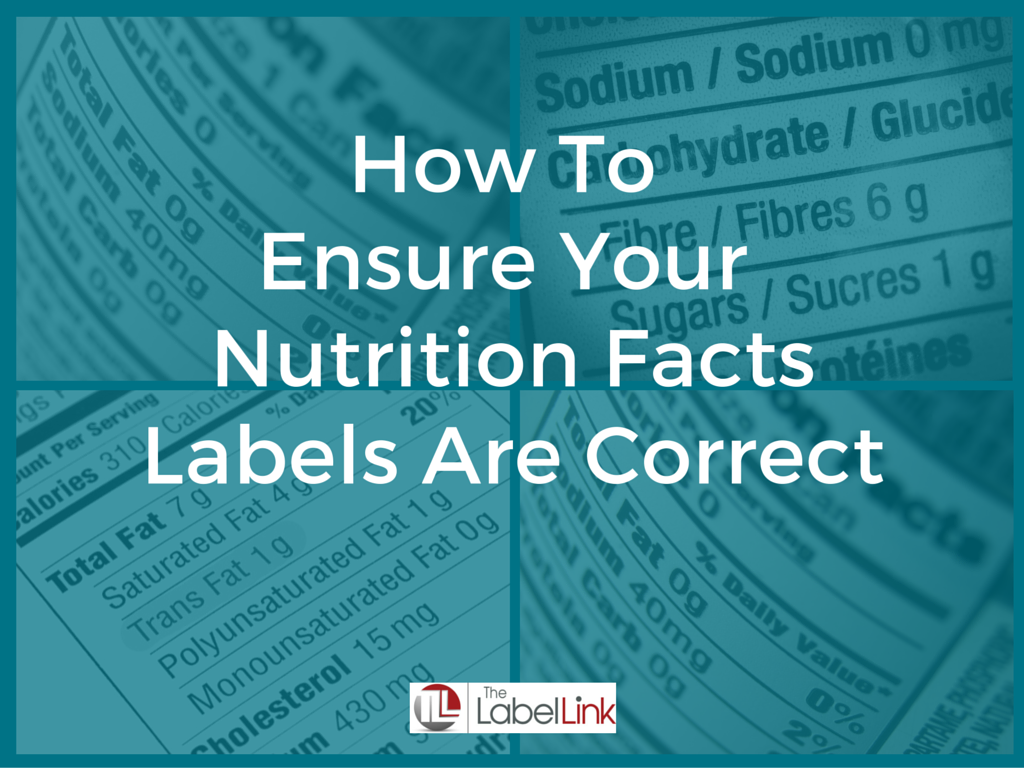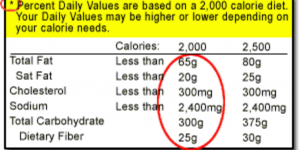
How to Ensure Your Nutrition Facts on Labels Are Correct
There are no ifs, ands or buts about it. If you’re distributing a food or beverage product, you’ll be required to put nutrition facts on labels.
For many manufacturers, nutrition labels are tricky business. Do you have the right information? Do you have enough information? Are you displaying more than you need to and taking up valuable label space?
With a quick visit to the U.S. Food & Drug Administration website you’ll find a wealth of information about nutrition labels. Sorting through it all can feel daunting so we’re here to help cover the basics and get you started.
NOTE: Before printing, you will need to double check that you have everything you need! Although this serves as a quick guide, every manufacturer has different requirements. Be sure you’re meeting all of them for your specific product.
The Basics
Every nutrition label has four main components:
- Serving size and number of sizes per container
- Calories, including calories from fat
- Nutrition breakdown of fats, cholesterol, sodium and total carbohydrates
- Nutrient breakdown of vitamins, fiber and more.
Take a look in your pantry or refrigerator and you’ll see these included on all nutrition labels – even when the values are all zero (such as in zero calorie beverages).
Let’s give each of these a closer look.
Serving Sizes
The FDA has specific serving size standards depending on the food group. They’ve done this to make it easier for consumers to compare similar products. This can also help you know how to breakdown your serving sizes on your labels. For example, you can have cups, pieces, ounces, or other familiar metrics. Look at your competitors for an idea of your industry’s standard if you’re not sure.
Directly below the serving size, you must indicate how many servings are available in each package. This way the consumer knows that there are multiple servings in your package and to be cautious not to overconsume unintentionally.
Calories
Many Americans monitor their caloric intake to some degree. Whether it’s by glancing at your nutrition label or by measuring food precisely, most of your buyers will be curious about how many calories are included in your product.
There are two types of calories you must display – total calories (in bold) and calories from fat. The calories must equate to only ONE serving of your product.
The FDA advises most consumers to eat 2,000 calories daily.
Nutritional Information
The nutritional breakdown is another source of information for consumers.
The FDA requires that the nutrients consumers want to limit remain at the top of the label. These include Total Fat (in bold), Saturated Fat, Trans Fat, Cholesterol (in bold) and Sodium (in bold). You must include the number of grams of each nutrient included in your product AND the daily recommended percentage of the nutrient.
Below the limited nutrients and above the optimal nutrients is Total Carbohydrates and Protein. The carbohydrates section should break down your sugars and dietary fiber. The protein section is straightforward.
The final portion of your nutritional label are the vitamins and minerals. These are recommended nutrients for every consumer. You do not need to bold these names.
Percent Daily Values
Next to each section, you must include the percent daily values. These values are based off of a 2,000 calorie diet. They’re meant for consumers to use as a reference point, even if they’re consuming a higher calorie diet.
All daily values must be presented as bold percentages next to each nutrient. even if the value is 0%.
There are a few exceptions to the daily value rules:
- You do not need to provide a daily value for trans fat since all trans fat is considered bad by the FDA.
- You should only include a daily value percentage by proteins if you’re making claims that your product is high in protein.
- You do not need to include a percentage for daily values of sugar – yet.
Footnote
Every food label must also include a small footnote describing the FDAs 2,000 calorie diet recommendation. Here is what it looks like:

The yellow highlighted area is the only requirement for manufacturers to include on their label. However, if the label size is too small, you do not need to include the white section.
The areas circled in red are the expert recommendations, which might be helpful for you to include on your food product.
Changes Ahead?
In July 2015, the FDA proposed a few changes. Although it might take some time for these changes to come into effect, they will impact nutrition facts for labels.
The proposed changes include:
- Sugar daily value percentages might need to be displayed soon. In the past there wasn’t a recommendation for daily values for sugar intake, so the daily value percentages did not need to be displayed. Now, the FDA has suggested consumers not leave sugar as more than ten percent of their daily caloric intake. If the proposed changes pass, you might need to display the daily value percentage next to your sugars to reflect this suggestion.
- An updated footnote on all nutrition labels. Right now the required statement is verbose. The FDA would like to shorten it slightly be changing it to read, “The percent daily value (%DV) tells you how much a nutrient in a serving of food contributes to a daily diet. 2,000 calories a day is used for general nutrition advice.”
If passed, these changes will require
you to re-print your labels eventually.
Question: Will the proposed changes to the nutrition facts for labels limit how many labels you print in the near future?
The changes could come about in one month or one year. It is unknown but will likely take a longer period of time to implement.
